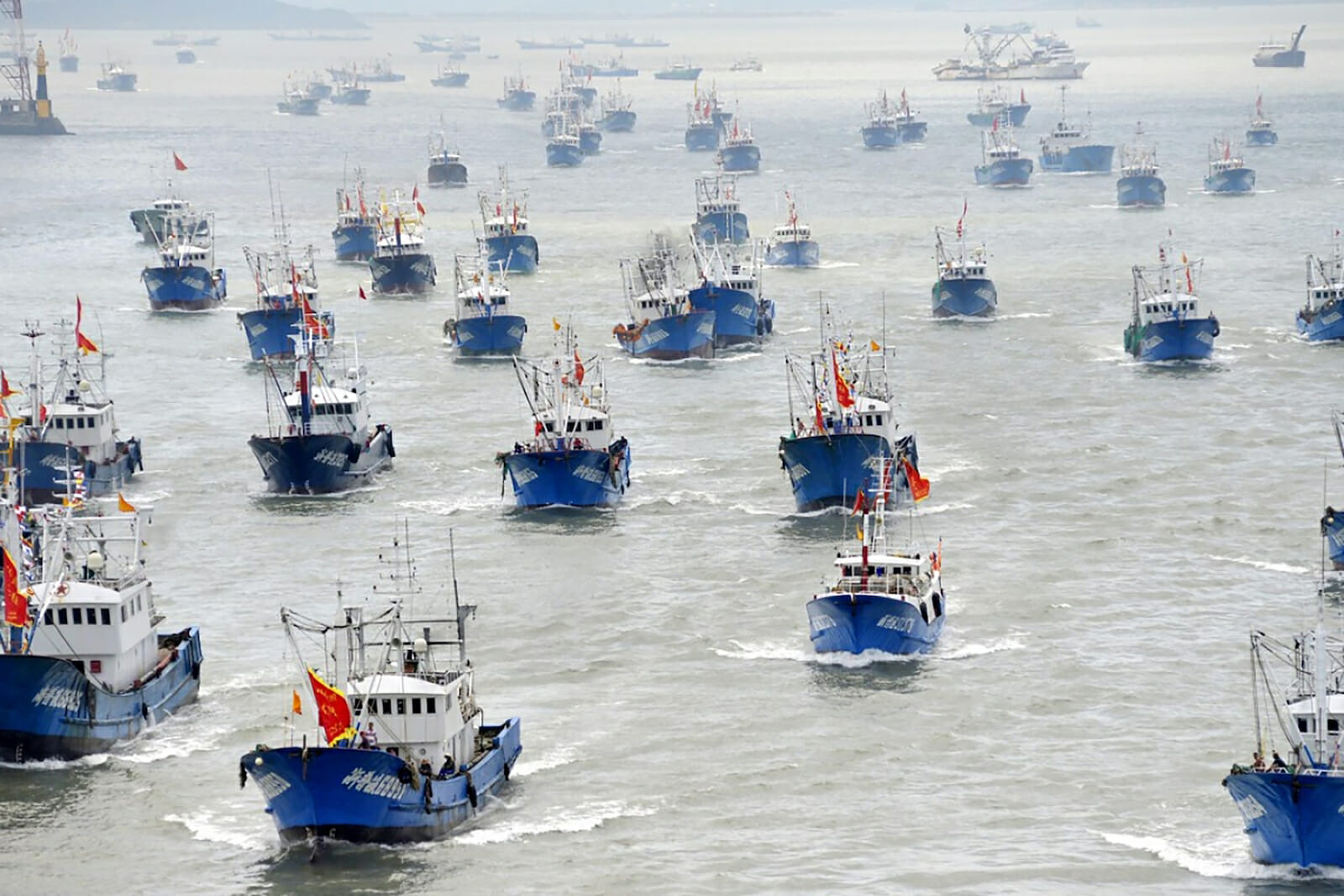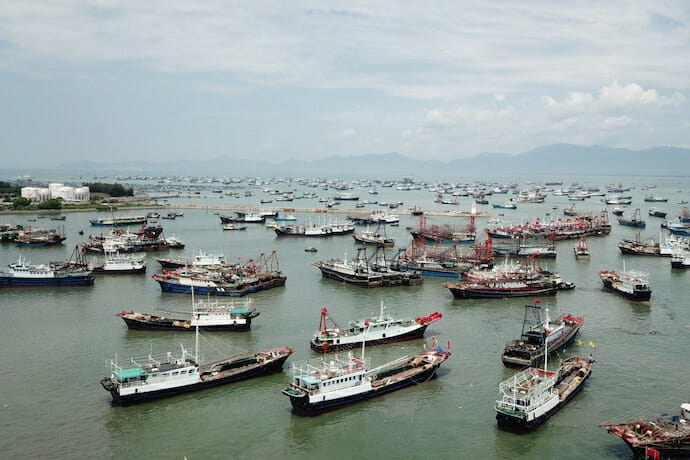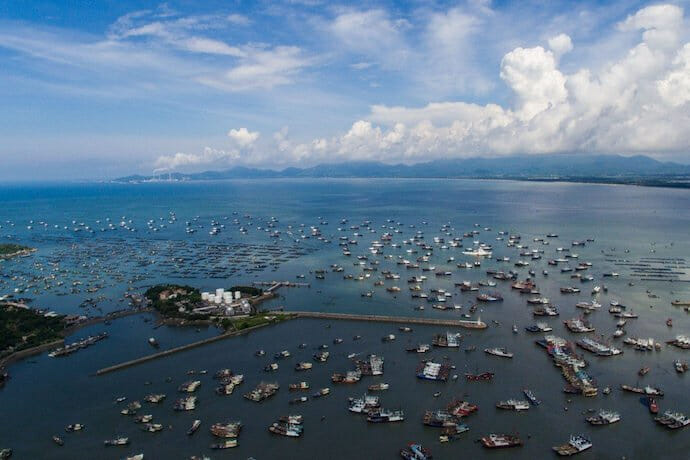
Geopolitics and Food Security: Why China Goes Fishing
China is increasingly using its fishing industry for geopolitical purposes. Beijing is deploying its fishing boats near and far from its borders with two targets: satisfying its domestic demand for food and expanding its sovereignty and influence abroad under the framework of the Belt and Road Initiative, the geopolitical project launched by Chinese President Xi Jinping in 2013. Such dynamics take place especially in the South China Sea, Oceania, Africa, and South America, which are reached by the maritime routes of the BRI.
China’s impact on the fishing industry is so big that it has a profound effect on the rest of the world from both a geopolitical and an environmental point of view.
Seafood represents an important part of the Chinese population’s diet and a key element of China’s food security. China consumes the largest quantity of fish in the world: 65 million tonnes in 2018, which accounts for 45% of the global volume. It means that on average Chinese consumption per capita is more than double compared to the rest of the world. Besides, China is both the most important fish producer in the world (accounting for 35% of global fish production in 2018) and its main exporter. If we exclude China’s share, 34% of production comes from Asia, 14% from America, 10% from Europe, 7% from Africa, and 1% from Oceania. China is first in the world both for global capture fisheries and farmed aquatic food production.
The total number of fishing vessels (including non-motorized boats) in the world is over 4.5 million. China’s fishing fleet is the world’s largest: 2,701 in 2019 according to the official numbers. Nonetheless, the Overseas Development Institute (based in London) estimates that China deployed 17,000 vessels in distant-water operations. In 1985, its very first distant-water fleet comprised 13 fishing boats. China is the first country in terms of fishing activities in foreign waters with a share of 38%, according to the Stimson Center. It is followed by Taiwan (22%), Japan, and South Korea (10% each).

China’s massive fishing activities have contributed to the depletion of fishery resources and attracted criticism from abroad. Beijing has adopted some policy changes to protect the environment. For example, it banned the processing and trade of giant clams in 2017 and adopted stricter regulations against illegal, unreported, and unregulated fishing in 2019. However, such measures have not prevented disputes with other countries.
Beijing deploys a large number of ships (Western countries call them China’s “maritime militia”) to assert its control over 90% of the South China Sea’s water mass, specifically on the Paracel and Spratly Islands. The former archipelago is also claimed by Vietnam, while the latter by the Philippines, Taiwan, Brunei, Malaysia, and Indonesia. In the South China Sea, China and to a lesser extent the other countries have built several artificial islands for military and civil purposes. Since 2013, China created 3,200 acres of new land, Vietnam built 120 acres and Taiwan built eight acres. Beijing wants to use these installations to extend its military projections far from its land borders to better defend itself in case of military attack by the United States, which has military bases in South Korea, Japan, the Philippines, and Singapore. The island-building operations have negative environmental effects on marine flora, fauna, and ecosystems.
China’s so-called “maritime militia” increased fisheries in those waters to legitimize its claims, supported by its coastguard and with the help of China’s Beidou navigation satellite system. Its deployment on a global scale and along the routes of the BRI will allow China to be more efficient on an economic level, to gather more information abroad, and to be independent from Western GPS technology. According to official Chinese sources, Beidou is 95% accurate in terms of localization. The military theater of immediate application remains the one comprising the South China Sea and Taiwan, where crossings between Chinese and American ships and planes take place daily.
The Philippines and Vietnam are the most fervent opponents to Chinese tactics, but they failed to neutralize them. In 2016, a tribunal by the Permanent Court of Arbitration ruled in favor of Manila rejecting China’s claims in the South China Sea. But the verdict wasn’t binding, so Beijing didn’t change its posture, preserved its military installations, and continued to deploy the “maritime militia” in the South China Sea. In March 2021, about 200 Chinese ships moored at Whitsun Reef, whose sovereignty is contested both by China and the Philippines. The story does not seem to depend on the need for boats to shelter from the bad weather. After that Manila stated that China built “illegal structures” in the same area. Whitsun Reef is part of the Union Banks, where China and Vietnam have two and four military installations respectively.

Just off the South China Sea, countries in Oceania are seriously concerned about Chinese fishing activities, which increased proportionally with China’s investments in infrastructures like ports and airports. Between 2018 and 2019, Papua New Guinea, New Zealand, Salomon Islands, Vanuatu, Tonga, Fiji, Cook Islands, and Samoa joined the Belt and Road Initiative (BRI). In 2020, Palau intercepted and detained Chinese boats illegally fishing sea cucumbers in its territorial waters. Last February, Australian media claimed that a Chinese company was willing to build a new city on the Papua New Guinean Island of Daru, which is close to maritime waters controlled by Canberra.
The project would include an industrial zone, a seaport, and other infrastructure projects over a 100 square kilometer area. Months before, Port Moresby and the Chinese Fujian Zhonghong Fishery Company signed a memorandum of understanding to build a 200-million-dollar industrial fishery park in Daru, igniting the debate among the locals about the agreement. Fishing activities are relevant for the economy of countries in Oceania. Their involvement in the BRI traces the Chinese penetration route in Australia’s sphere of influence and helps Beijing to counter the U.S. containment strategy in the South China Sea.
In Africa, China works on 16 fishing projects, has 20 fishing cooperatives operating, and more than 500 boats. Their presence reflects not only economic interests. Beijing aims to develop infrastructural corridors crossing the continent for two reasons. First, it wants to increase its diplomatic and military presence close to Europe, which has historic ties with the United States. Second, China is searching for ways to reduce its dependence on the conventional route crossing the Suez Canal and the Mediterranean Sea to reach the Atlantic Ocean. In this context, Sierra Leone is a meaningful case. A Chinese state-owned enterprise plans to build an industrial fishing harbor on Black Johnson Beach, close to the Peninsula National Park. The project triggered protests by environmentalists and local fishermen, who produce 70% of the fish for the domestic market. Moreover, the Exim Bank of China will loan Mauritania $87 million to build a fishing harbor 25 km north of the capital Nouakchott.
The U.S. is aware of China’s tactics. Last May, Gen. Stephen J. Townsend, AFRICOM commander, put the spotlight on China, claiming that it is willing to build a second military base on the Western coast of Africa besides the one opened in Djibouti in 2017. Chinese strategists have been debating this for years. The improvement of the Chinese armed forces and the relentless Sino-U.S. collision course could accelerate these types of activities.
China’s distant-water fishing fleet also extends its range of action to the Pacific coastline of South America, particularly close to Ecuador (the world’s largest shrimp exporter), Chile, Peru, and Colombia. Quito detected Chinese ships many times at the edge of its exclusive economic zone around the Galapagos Islands. Ecuadorian officials claim that their activities are damaging the biodiversity of the archipelago.
Today, Latin America is not at the top of Beijing’s geopolitical priorities list. Economic interests aside, in the long run, Beijing wants to consolidate its presence in the so-called “America’s backyard” to discourage Washington’s efforts to destabilize Chinese interests in the Indo-Pacific, especially in the South China Sea, where the U.S. supports Southeast Asian countries’ maritime claims against Beijing, and Taiwan’s de facto independence. To this end, China finances infrastructures in several Latin American countries and some of them (e.g., Uruguay, Chile, Bolivia, Trinidad and Tobago, Guyana, Costa Rica, Venezuela, Barbados, and Panama) joined China. Beijing defined the Latin America and Caribbean region as a “natural extension” of the maritime branch of the project, hence why discussions are taking place in the U.S. about leading a coalition with South American countries to counter China’s illegal fishing activities.
The UN’s Food and Agriculture Organization estimates that China’s fish production will reach 74 million tonnes in 2030 and that the country will continue to be the major exporter of fish for human consumption, followed by Vietnam and Norway. Both domestic needs, driven by the appetite of the emerging middle class and geopolitical ambitions abroad will stimulate China to preserve its role as a major actor in the fishing industry worldwide, especially where maritime resources are plenty and investments in infrastructure are needed.
This article was originally posted in Food and Migration.
